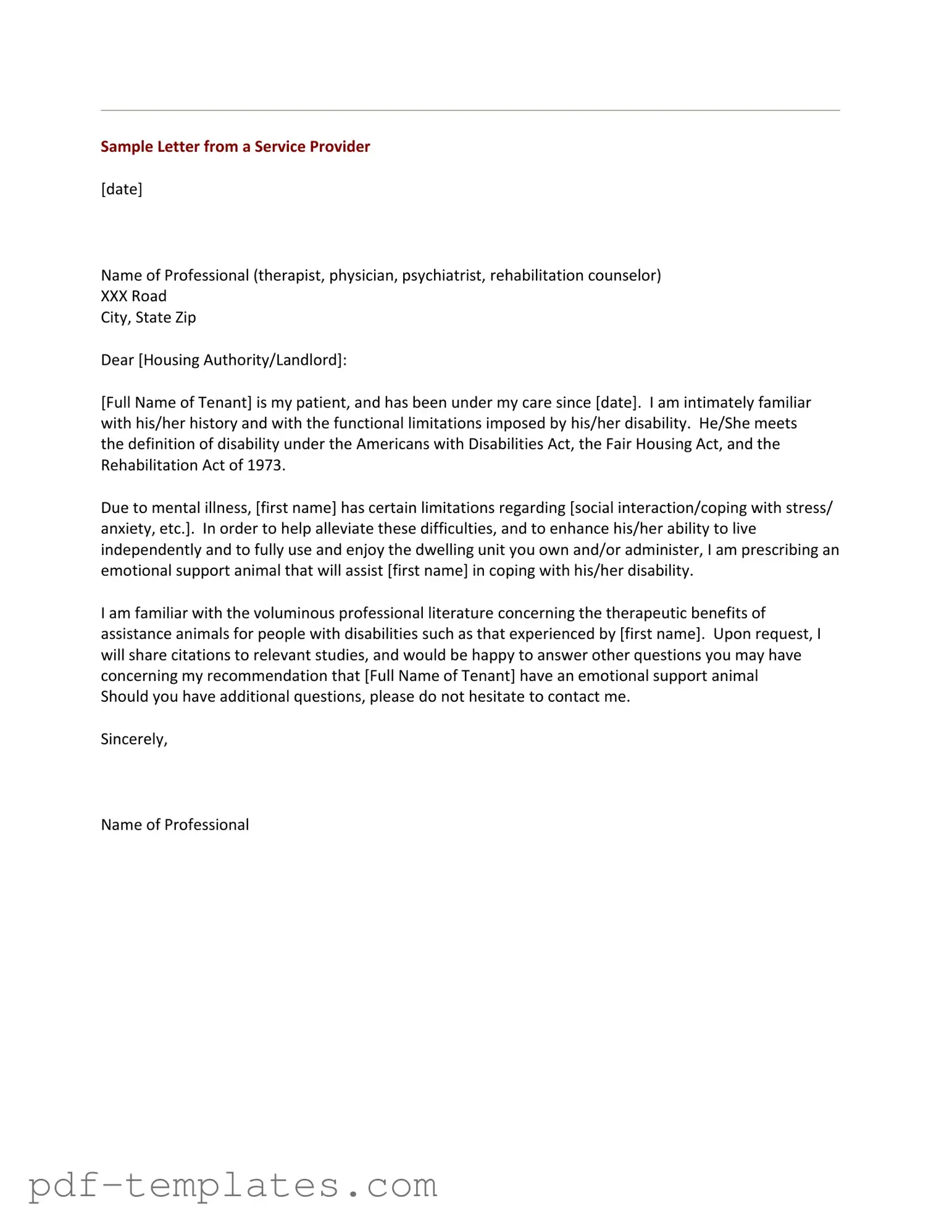The Emotional Support Animal (ESA) Letter is often compared to a service animal letter. Both documents serve to affirm the need for an animal's presence in a person's life. However, a service animal letter specifically pertains to trained animals that assist individuals with disabilities. These animals are granted broader access rights in public spaces compared to emotional support animals, which are primarily recognized for their therapeutic benefits in private settings.
Another similar document is the psychiatric service animal letter. This letter confirms that a specific animal helps a person manage a psychiatric condition. Unlike an ESA, a psychiatric service animal undergoes specialized training to perform tasks that directly assist the individual. Both letters emphasize the connection between the animal and the person's mental health, but the psychiatric service animal letter highlights the animal's active role in providing assistance.
The therapy animal letter is also akin to the ESA letter. Therapy animals are often used in settings like hospitals or schools to provide comfort to multiple people. A therapy animal letter typically certifies the animal's role in these environments. While both types of letters recognize the emotional benefits of animals, therapy animals are not designated for a specific individual, unlike emotional support animals.
A pet deposit letter may share some similarities as well. This document is often required by landlords to allow tenants to have pets in rental properties. While it does not address emotional support, it acknowledges the presence of an animal in a housing situation. An ESA letter provides a stronger basis for keeping an animal in housing, as it is tied to a person's mental health needs.
The letter from a licensed mental health professional is another document that relates to the ESA letter. This letter confirms that an individual has a diagnosed mental health condition that necessitates the support of an animal. Both documents require a professional's endorsement, but the ESA letter specifically allows for the presence of the animal in housing and travel situations, while the mental health letter may not cover these aspects.
Additionally, the disability verification letter can be similar. This letter provides proof of a person's disability, which may be required for various accommodations. While it does not focus specifically on animals, it can support the need for an ESA by establishing the individual's qualifying condition. The ESA letter builds on this by directly linking the animal to the person's emotional support needs.
The Fair Housing Act (FHA) letter is relevant as well. This document outlines a person's rights under the FHA to have an emotional support animal in housing. It often accompanies the ESA letter to reinforce the legal protections afforded to individuals with disabilities. Both documents aim to ensure that individuals can live with their support animals without facing discrimination.
Lastly, the airline travel letter is similar in that it serves to facilitate travel with an emotional support animal. This letter is often required by airlines to allow an ESA to accompany a passenger in the cabin. While the ESA letter provides general support for housing and emotional needs, the airline travel letter specifically addresses the travel context, ensuring that the individual can fly with their animal.
